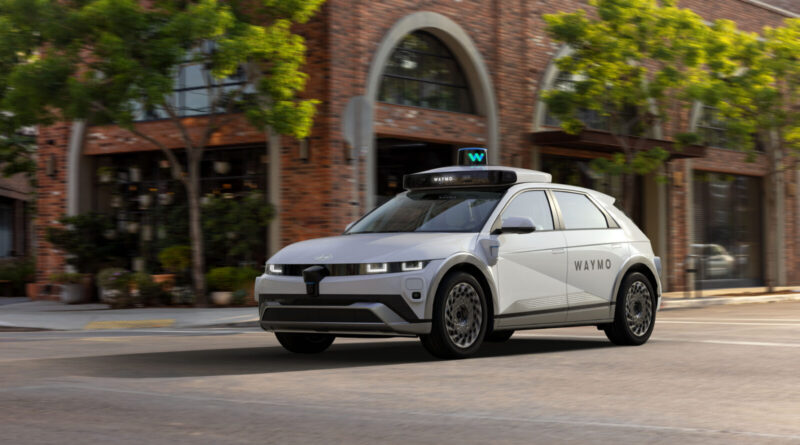Sign up for CleanTechnica’s Weekly Substack for Zach and Scott’s in-depth analyses and high level summaries, sign up for our daily newsletter, and/or follow us on Google News!
We’ve had a few articles recently highlighting problems with the idea of a robotaxi revolution. (See here, here, and here.) However, there are definitely some upsides to robotaxis, and there’s one in particular that deserves a nod.
A reader shared this study with us in a comment thread, and it is something we covered when it came out, but I actually forgot about it until it was brought up by this reader. The overall point: robotaxis are safer. Well, Waymo robotaxis at least.
Here’s what Waymo wrote when it announced the findings, which come from a prominent third-party organization: “Today, we’re sharing our new cutting-edge research with Swiss Re, one of the world’s leading reinsurers, analyzing liability claims related to collisions from 25.3 million fully autonomous miles driven by Waymo. The study uses auto liability claims aggregate statistics as a proxy for at-fault collisions and expands on our previous research. It demonstrates that as we’ve scaled operations across Phoenix, San Francisco, Los Angeles, and Austin, the Waymo Driver significantly outperforms both the overall driving population and the latest generation of human-driven vehicles equipped with advanced driver assistance systems (ADAS).”
In other words, Waymo robotaxis are much less likely to get into an accident than other cars. I feel like I’ve seen an accident a day in the past week around here, including a really disastrous one. If more of the cars around us were Waymo robotaxis, I certainly feel like we’d all be safer off.

Here’s more from Waymo on the findings of the study noted above: “The study compared Waymo’s liability claims to human driver baselines, which are based on Swiss Re’s data from over 500,000 claims and over 200 billion miles of exposure. It found that the Waymo Driver demonstrated better safety performance when compared to human-driven vehicles, with an 88% reduction in property damage claims and 92% reduction in bodily injury claims. In real numbers, across 25.3 million miles, the Waymo Driver was involved in just nine property damage claims and two bodily injury claims. Both bodily injury claims are still open and described in the paper. For the same distance, human drivers would be expected to have 78 property damage and 26 bodily injury claims.
“Notably, the Waymo Driver’s safety advantages hold true even when compared to newer vehicles (2018-2021 models) equipped with modern safety technology. This includes advanced driver assistance systems (ADAS) such as automated emergency braking, forward collision warning, lane keeping assistance, and blind spot warning. When compared to this group, the Waymo Driver showed an 86% reduction in property damage claims and 90% reduction in bodily injury claims.”
An 88% reduction in property damage claims and 92% reduction in bodily injury claims — that’s a big deal. Despite other issues with robotaxis (like increased traffic), it’s hard to not look at those numbers and think that we should have a massive shift into robotaxis. That said …
Perhaps instead of rolling out robotaxis exponentially, we will see Waymo’s self-driving tech make its way into consumer cars in the coming years, with the opportunity to turn on Waymo Driver and sleep, eat, watch something, game, or just watch the landscape on the way to work, to pick up kids, to go shopping, etc. I’d take that! Of course, there’s a similar hope that Tesla’s Full Self Driving (FSD) will provide this one day, but I have FSD (I’ve had it for almost 6 years now) and I have much less hope in that coming about than Waymo tech continuing to lead the market.
“Auto insurance claims data, traditionally used to assess human driver liability and risk, is a powerful tool in evaluating the safety performance of autonomous vehicles,” said Mauricio Peña, Chief Safety Officer at Waymo. “This is a truly groundbreaking study that not only validates the Waymo Driver’s strong safety record, but also provides a scalable framework for ongoing assessment of the impact autonomous vehicles make on road safety.” Indeed. It is.
You can read the full scientific paper on this study here.


Whether you have solar power or not, please complete our latest solar power survey.

Have a tip for CleanTechnica? Want to advertise? Want to suggest a guest for our CleanTech Talk podcast? Contact us here.
Sign up for our daily newsletter for 15 new cleantech stories a day. Or sign up for our weekly one on top stories of the week if daily is too frequent.
CleanTechnica uses affiliate links. See our policy here.
CleanTechnica’s Comment Policy

